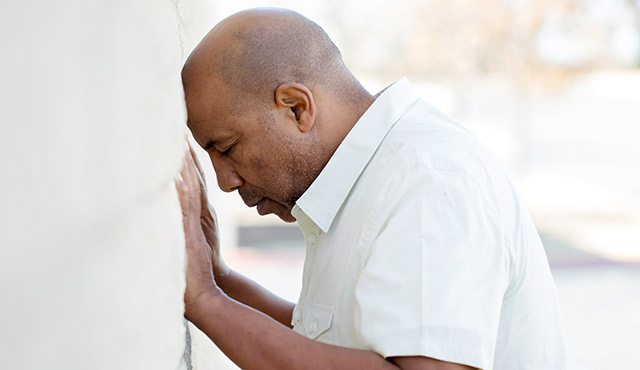One of the most important factors in stroke recovery is time. The faster a patient is evaluated and treated, the better the chance he or she will fully recover from the damaging effects of a stroke.
Orange County residents who live near St. Jude Medical Center are lucky — they’re close to an Advanced Comprehensive Stroke Center as designated by the American Heart Association, the American Stroke Association and The Joint Commission, an independent, nonprofit organization.
What does this mean? Simply that St. Jude Comprehensive Stroke Center is one of the best in the country, a designation based on the expertise of the stroke team, door-to-treatment times and stroke education efforts, among other factors.
Getting the right treatment fast
“The ER team at the Comprehensive Stroke Center is ready to move into action as soon as an EMS professional calls in with a ‘code stroke’ alert,” says Laura Ramos, Chief Nursing Officer at St. Jude Medical Center.
The CT scan is immediately cleared for the incoming patient and a team of stroke physicians and nurses gathers in the ER to receive the patient, says Ramos. They do a comprehensive assessment of the patient upon arrival, then send him or her for a CT scan to determine the type and severity of the stroke.
About 87% of strokes are ischemic, according to the American Heart Association. This means a blood vessel is blocked by a clot, depriving the brain of blood and oxygen. The treatment is a drug called tissue plasminogen activator, or TPA, which breaks up the clot.
Most hospitals aim for a 60-minute time period between the moment a patient enters the ER and when that patient receives TPA.
“We well surpass that,” says Ramos. “For the last two years, our goal for door-to-TPA has been 45 minutes. We have administered treatment as quickly as 12 minutes.” She attributes this quick time to the readiness of the multidisciplinary team and the immediate availability of the brain imaging technology.
Sometimes surgery is required to extract a clot or to stop bleeding in the case of a hemorrhagic stroke. The Comprehensive Stroke Center has a “biplane suite” — advanced medical imaging technology used by neuro interventional radiologists and surgeons to precisely target treatment areas.
“We take care of any type of stroke,” says Ramos. “We have a multidiscipline team of neurospecialists available at all times and an ICU team of intensivists [critical care physicians] who are board-certified in neuro-critical care,” says Ramos.
Rehab
Recovery from a stroke can take weeks and months. Patients sometimes need to relearn simple tasks like walking, eating, getting dressed and talking. The goal of rehabilitation is to reverse the effects of stroke and resume normal life as much as possible. “We offer stroke-specific physical therapy, occupational therapy, speech therapy — we have an entire team to help get the patient back to the highest level of functioning,” says Ramos.
But when one member of a family has a debilitating stroke, often the rest of the family needs help adjusting too. Ramos says that the Center offers outpatient rehab and support groups. “We prepare the patient for going home with a holistic approach, whole-person care for full recovery.”
Education
Each year, about 795,000 people experience a stroke, according the American Heart Association, and strokes are the leading cause for long-term disability.
But stroke deaths are declining, and experts say this is partly due to improvements in emergency care and treatment.
St. Jude’s Comprehensive Stroke Center works to spread information about strokes by educating EMS professionals on how to recognize stroke symptoms, and personnel in neighboring hospitals on how to improve their level of care of stroke patients.
The Center also works with community partners to educate Orange County residents about lifestyle changes that can help prevent strokes in the first place, says Ramos. These include stopping smoking, keeping blood pressure down, getting exercise and maintaining a normal weight.
Signs of stroke
Here are some signs that indicate a person is having a stroke. If you notice any of these symptoms, in yourself or someone else, call 911 immediately.
One side of the face droops
One arm is weak or numb
Slurred speech
Sudden confusion, trouble speaking or understanding speech
Dizziness, sudden trouble with walking or balance
Sudden severe headache
Source: American Stroke Association

